Driving the highways and byways of the Yakima Valley, you can see it. The trees are finally waking. As the shiny new growth pushes its way through the tree tips, the flower buds fist up, just waiting to burst open into fat, full blooms. Beautiful, yes; but really, it’s just a natural byproduct of development that we are privy to on the way to fruit. For the tree, bloom is a peacock tail or rouged lip giving a nod to a would be propagative partner in a selfish attempt at ensuring its own survival. Fortunately, it does catch a few eyes. Five to be exact. The honeybees are out and more than willing to oblige the trees in their procreative quest, all in exchange for the insect equivalent of groceries.
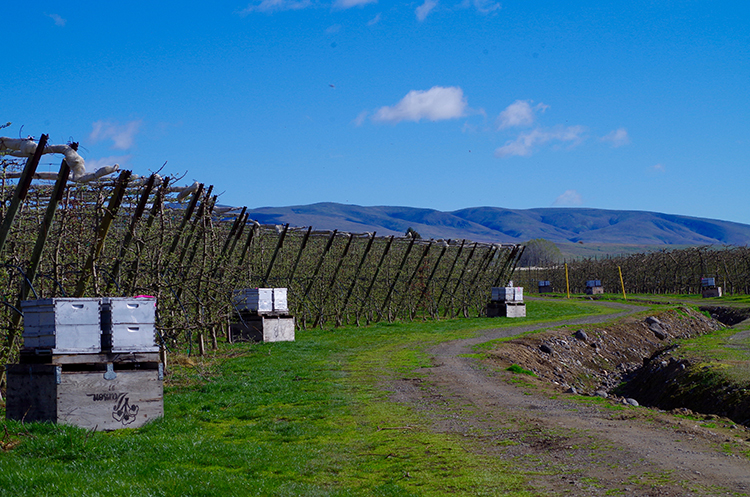 Winding through dirt roads out on the Jones Farm in Zillah, Shelley and I see the bee stands at tree row ends just itching to do some pollination. Shamera Stewart from the Mt. Adams Honey Company guides us through in her flatbed truck and is pointing them out as we go by pallet after pallet scattered throughout the orchard. Each box column has one colony, and each pallet has four boxes. She tells us that she just got back from wintering with the bees in California and is fresh off the almond bloom. Finally warm enough here with the flowers beginning to open, it was time to return home to the Yakima Valley orchards.
Winding through dirt roads out on the Jones Farm in Zillah, Shelley and I see the bee stands at tree row ends just itching to do some pollination. Shamera Stewart from the Mt. Adams Honey Company guides us through in her flatbed truck and is pointing them out as we go by pallet after pallet scattered throughout the orchard. Each box column has one colony, and each pallet has four boxes. She tells us that she just got back from wintering with the bees in California and is fresh off the almond bloom. Finally warm enough here with the flowers beginning to open, it was time to return home to the Yakima Valley orchards.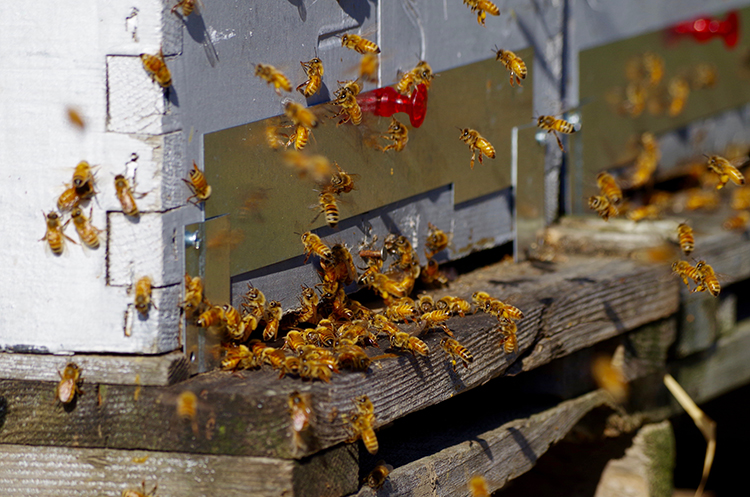
While honey is certainly the endgame, it’s not the goal right now. There’s a symbiosis in pollination that benefits both the fruit and the bees. The trees need the pollination of the bees to set fruit for the year, the bees need the pollen and nectar to help build up their population to make a strong colony. Come summer when it’s time to harvest the honey, a large healthy bee population can produce a lot of it. Currently there are around 30,000 bees in a colony. That number will more than double in the next few months. So many new babies need food in the form of pollen and nectar. In addition to having so many mouths to feed, the bees also always have an instinctual eye on stockpiling food supplies for winter in the form of honey. A hive is essentially part nursery, part pantry.
Because it’s been a bit cooler this spring, the bloom is just getting started. On this day, Shamera’s people are providing a cane sugar syrup for the bees to feed on until the bloom is ample enough to support the needs of the colony. If the food supply is steady, the babies keep on coming, and the population will continue to grow. We catch up with Zach Guitreau and Aldert Navarro as they are pouring the syrup into a hive. These guys have the typical beekeeper look. Zach’s is simplified with just the hat and facial netting, Aldert has full protection covering his upper body. We spot a bee smoker nearby, wisping smoke tendrils curling from the spout.  These are Italian honeybees they’re handling, one of the most common as they are more gentle in temperament and high honey producers. The smoke has a calming effect that makes them easier to work with. Zach has been at this for years in areas all over the country from California to North Carolina. He pushes some smoke over the top of the box and pulls out a section of the colony for us to see.
These are Italian honeybees they’re handling, one of the most common as they are more gentle in temperament and high honey producers. The smoke has a calming effect that makes them easier to work with. Zach has been at this for years in areas all over the country from California to North Carolina. He pushes some smoke over the top of the box and pulls out a section of the colony for us to see.
The panels are incredible. There is so much activity occurring. The honeycombed cells are meticulous in their consistency. This particular panel has a little bit of everything. Some cells have pollen packed into them, some show the worm like larva, and others are covered up where the larva are developing into big-girl bees or pupa. When they’re ready, they will chew out of the cells and get to work. We spot liquid in open cells where nectar will be converted to honey, and we see a different looking covered area that we are told is honey. Zach breaks through it with a finger and sure enough, that golden viscous sweet stuff is revealed. Shelley and I brave the bees crawling everywhere and have a taste. Amazing. Standing under a blue sky in an apple orchard full of trees on the verge of full bloom dipping our fingers into a honeycomb of fresh honey still in the hive is a pretty spectacular experience, even by rooted standards. Shamera and Zach discuss some work details while we stand there and marvel. Even some of the bees creep over to the broken section of beeswax and enjoy a snack of exposed honey.
With the apple blossoms being so tight, we run over to the cherries which are blooming profusely so we can get a better look at the bees in action. They are just doing their thing, flying from blossom to blossom. Standing among the trees, a faint buzz hangs in the air. The trees are getting the opportunity to create seeds in a fruit package and pass their genes into the world. The bees can feed themselves and their young, and store up for the leaner times when flowers are not as profuse.
From here, Shamera tells us that they will move north into Brewster and Omak following the bloom and then into the area north of Spokane to catch the snowberries. After that there will be honey. Collecting the honey is another story that we plan on circling back to when the time is ripe. For now, we are content to get a closer look at this partnership between the bees and the trees. Being a lover of both fruit and honey, it’s a pretty sweet connection.
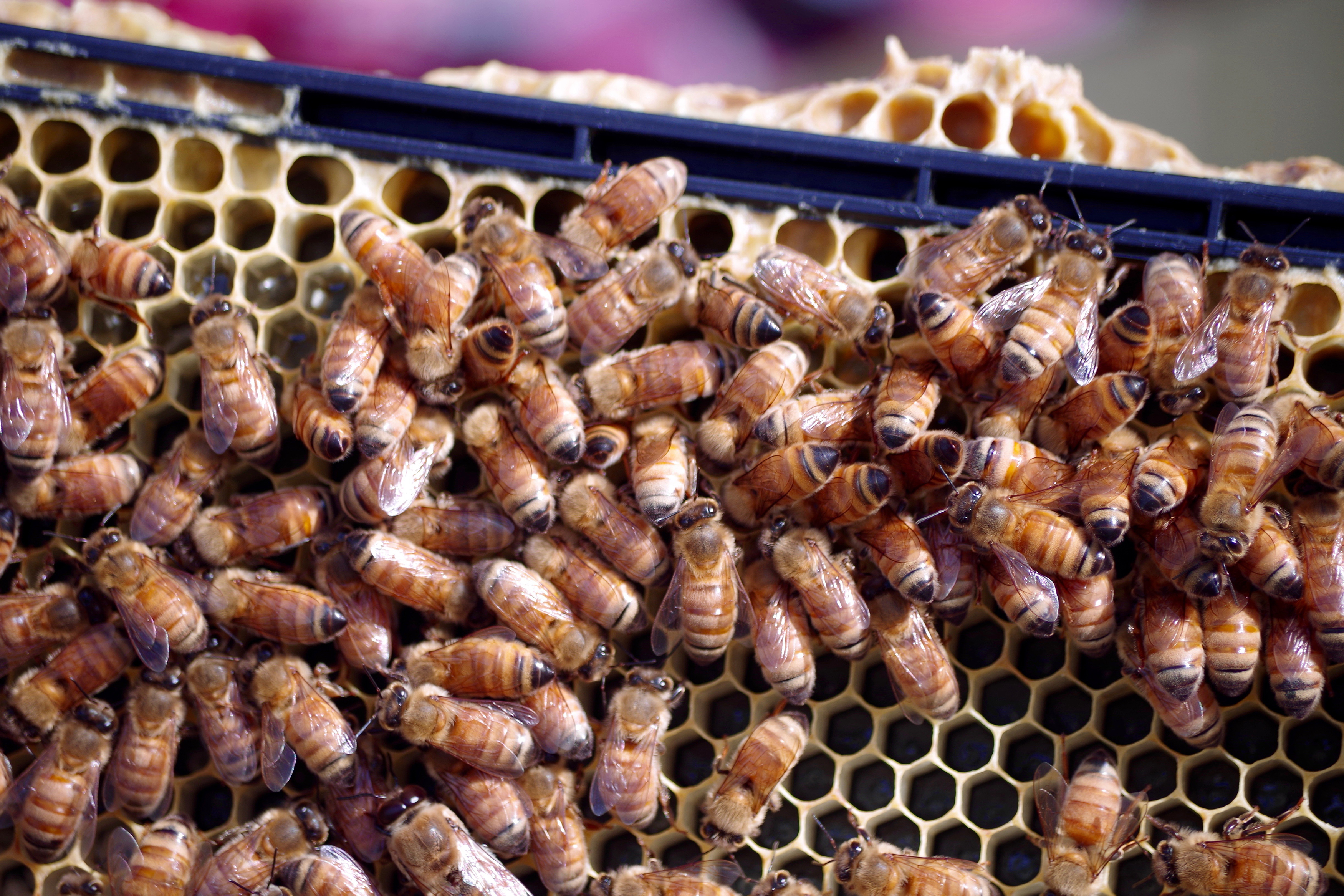





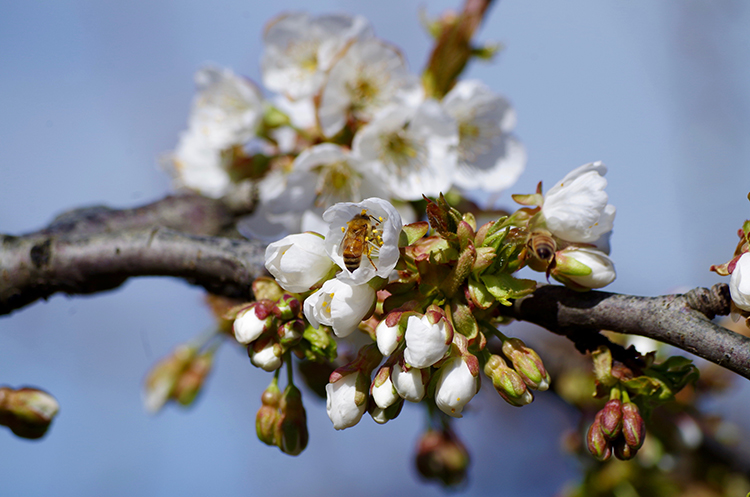
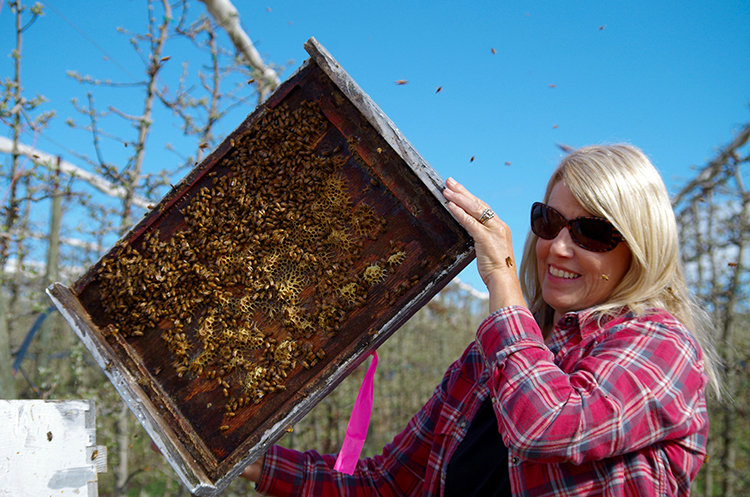

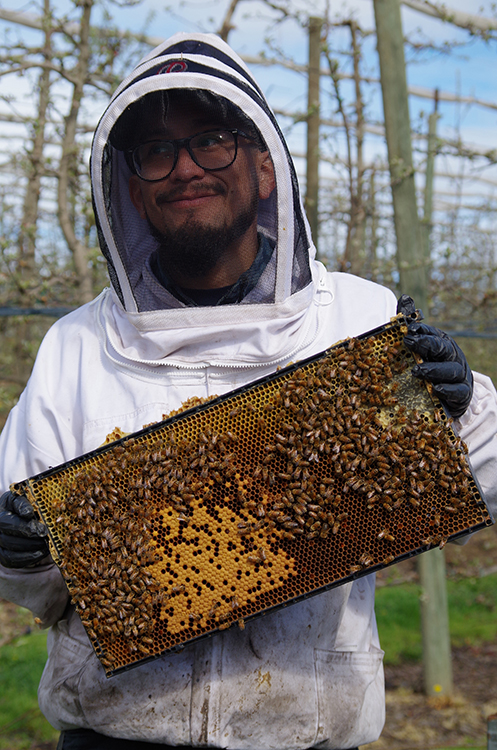

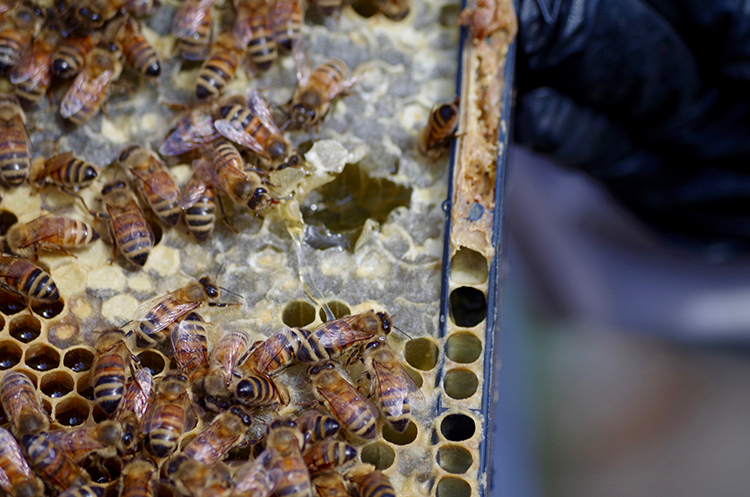

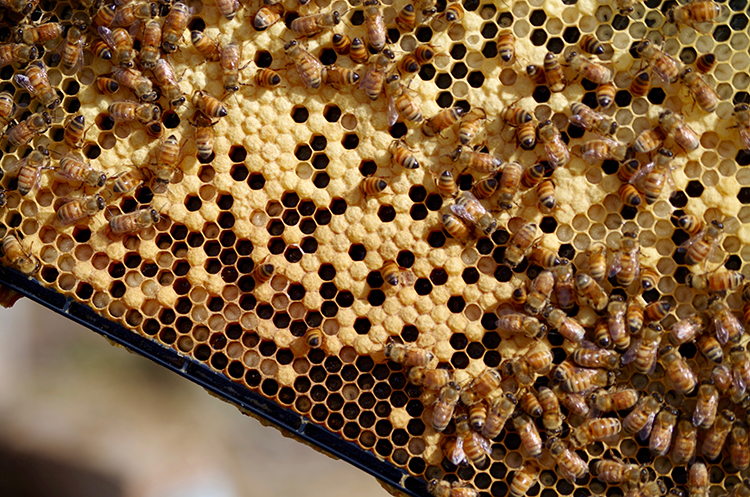
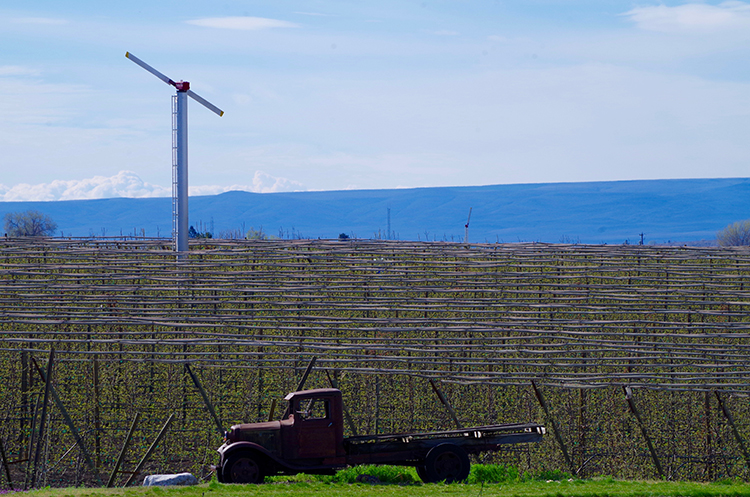
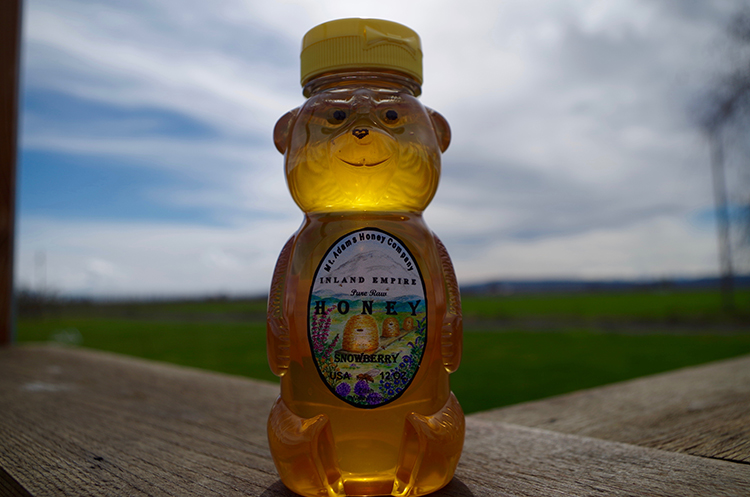
Very well done article on the bees. You should submit it to the local paper. As a local fruit grower I give you 5 stars! Here’s to looking forward to a bountiful season that honey bees play a big part in.
Very interesting, congratulations!
Thank you
Wonderful educational piece Andreanna! Keep it up.
Love this time of year! Informative article on our bee friends!
Very nice article Andreanna.?